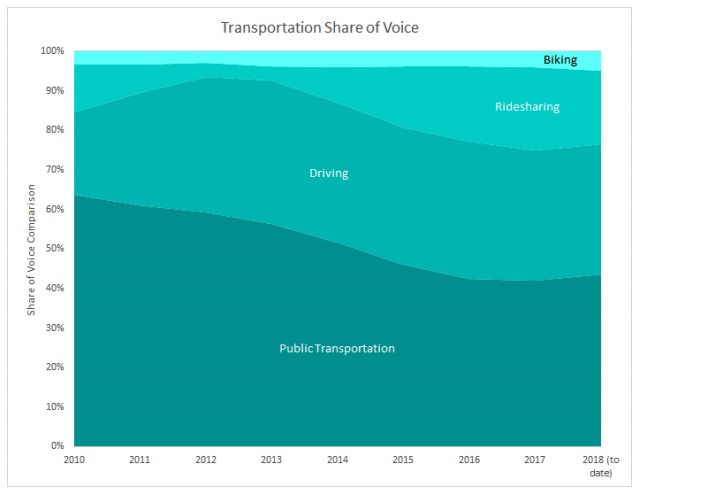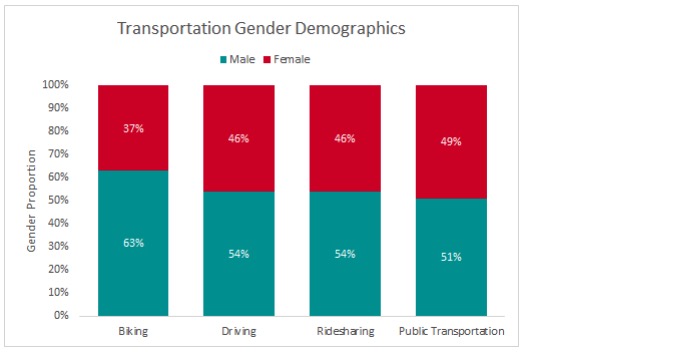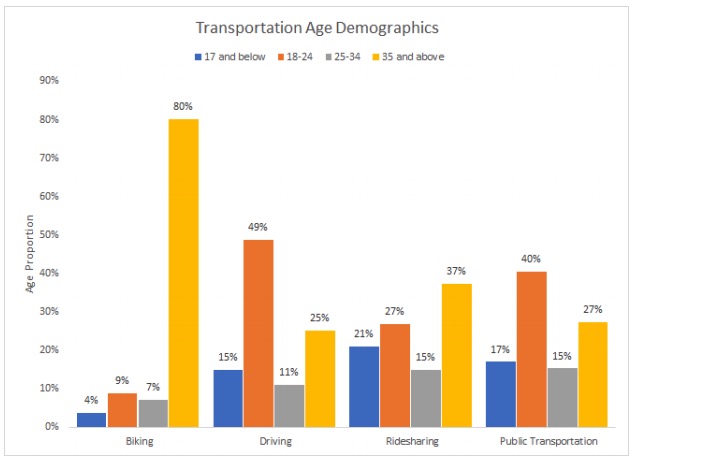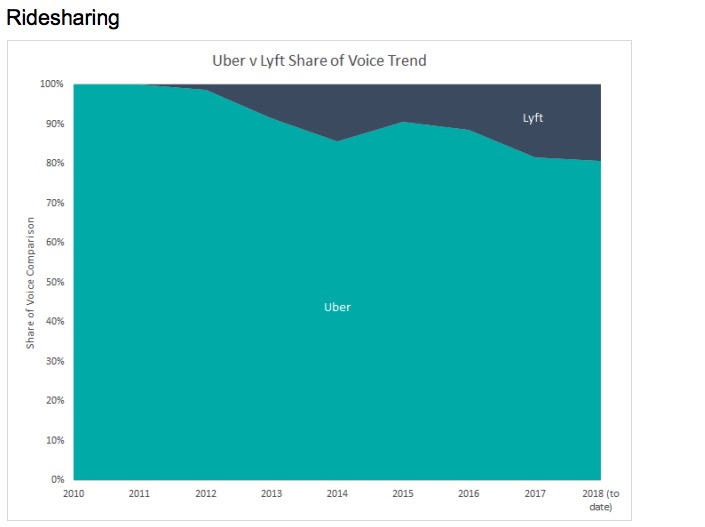CRIMSON HEXAGON
As long as humans are alive, they will always need to be able to get from one place to another. That’s why transportation is so critical. Without it, how can people go to work, run errands, travel to fun destinations, or return home? No matter what the situation is, consumers share their commutes on social media: it runs the gamut from delayed subways to what kind of car to buy to which ridesharing app to use to where they are biking to. Though transportation is rife with problems, some people have more transportation choices now than they ever had before. Because the transportation conversation is simultaneously expansive and deep, we are able to unearth meaningful insights about one of the most vital yet unassuming components of daily life. Analyzing social posts from the United States, we looked at:
- Car preferences
- The rise of ridesharing
- The sharing economy for bikes and scooters
Overall, consumers are talking about ride sharing more and driving and public transportation less. While public transportation will always be available, consumers explore alternatives to their bus, subway, and train systems. Ridesharing and biking experienced the most growth since 2010, while driving’s share of voice has remained fairly consistent.
There are also distinct gender differences for different methods of transportation. Biking is majority male, while public transportation is the most evenly split, with 51 percent male and 49 percent female. The male dominant biking conversation reveals that there may be barriers when it comes to gender equity in biking.
Biking is most favored among those 35 and above. Combined with the gender insights from before, older males discuss biking the most on social. To be able to bike comfortably could be a matter of experience. The driving discussion is dominated by those 18-24, perhaps looking for their first car. The oldest population also frequently discusses driving, as they may already be car owners and used to driving as a form of transport.
The transportation landscape has changed so that driving is no longer viewed as the main way to get from one place to another. We looked at the car-buying conversation and found that generally eco-friendly cars are the most desired, followed by sports cars, SUVs, hybrid cars, then electric cars.
Despite SUVs getting a bad reputation, they are still popular for their size and the amount of space they can hold.
Uber used to dominate the ridesharing conversation, but Lyft has cut into Uber’s share of voice. While Uber is basically a household name at this point, Lyft is also popular in the social conversation. Lyft, which launched in 2012, experienced a steady share of voice increase from 2012 to 2014 as people explored the new alternative to Uber. Its share of voice shrank, but started growing again slowly from 2015 to 2016 then more sharply from 2016 to 2017 when consumers expressed their distaste for Uber’s actions during the Immigration Ban.
Why is ridesharing so popular now? Commuters must find value in it, whether it is for a daily or weekly commute or less frequently. Many discuss commuting to work via rideshare, getting home from late night activities after public transportation stops running, commuting to class, and using rideshare to help out with errands like grocery shopping.
When it comes to ridesharing, what do consumers want? As ridesharing grows in popularity, consumers are increasingly vocal about their ridesharing preferences. Slightly more prefer not speaking with their driver than having a pleasant conversation with their driver. Amenities like water, snacks, phone charger, and gum top the list. These trends also reflect what people use ridesharing for. A quick conversation-less ride may be a morning commute to work while a chatty ride may be on the way to a party, or while traveling. Water and phone chargers are essential after a night out.
Urban areas are home to the most Lyft and Uber discussion. Tech-centric towns like San Francisco and Boston are prominent in both the Lyft and Uber discussion. The Lyft and Uber discussion also prevails where public transportation complaints are high.
Download full version (registration required): Consumer Trends Report: Transportation
About Crimson Hexagon
www.crimsonhexagon.com
With instant access to the world’s largest volume of unstructured text and images across social, online public, and enterprise-held data sources, Crimson Hexagon’s AI-powered consumer insights platform allows clients to analyze audiences, track brand perception and campaign performance, and even detect competitive and market trends.
Tags: Crimson Hexagon, Cycling, driving, Ridesharing, transportation











 RSS Feed
RSS Feed